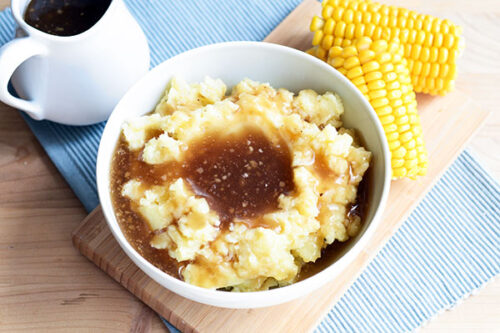Favorite 5 Articles from the November 2006 Newsletter

Favorite Five for November 2006
My favorite articles found in recent medical journals.
Vegetables Will Save Your Mind
Associations of vegetable and fruit consumption with age-related cognitive change by Martha Clare Morris from the Rush Institute of Health and Aging, Chicago, IL, published in the October 2006 issue of the journal Neurology found, “High vegetable but not fruit consumption may be associated with slower rate of cognitive decline with older age.” This six-year study of 65-year and older Chicago residents found a 35% slower decline in cognitive function each year for those who ate the most vegetables. In the entire group of people under study the average number of vegetable servings a day was 2.3, with a range from 0 to 8.2. Green leafy vegetables, summer squash, eggplant, and kale were some of the vegetables found to be valuable—however, this list should not be considered exclusively beneficial. The authors believe the benefits to the nervous system were from the antioxidants and other bioactive compounds (like flavanoid). Even though fruits are also rich in these bioactive substances, the researchers could not explain why their findings failed to support similar benefits from fruits.
Comments: Research from this same group published in 2004 showed, “A diet high in saturated or trans-unsaturated fat or low in nonhydrogenated unsaturated fats may be associated with cognitive decline among older persons.” This dietary trend—more fat and fewer vegetables—is reminiscent of the discussion of heart disease, strokes, type-2 diabetes, and other degenerative diseases. The same harmful diet that is causing artery closure to the heart may be closing the small and large arteries to the brain with resulting loss of intellectual activity. Furthermore, research on another common form of dementia, Alzheimer’s disease, has also found a causal relationship with dietary fat and cholesterol. (See my June 2004 Newsletter article: Alzheimer’s Disease Can Be Safely Prevented and Treated Now.)
Often times the variation in what people eat is so small that benefits are unrecognizable. The fact that this research was done on people who all eat the rich Western diet and still shows a difference is noteworthy. Worldwide, people’s diets show much greater variety in the amount of plant and animal foods. This larger variation is reflected in the observed difference in the incidence of dementia and Alzheimer’s Disease—both are much less common in Asian countries where people eat mostly starches (rice), compared to people of Europe and the US, where dairy and meat are the dominant foods.
The threat of becoming mentally incapacitated and a burden on family and society is scarier than the threat of dying. Therefore, this research showing the right dietary choices will keep us functioning can act as a strong motivator. The ideal diet for the preservation of mental and physical function is based on starches, with the addition of fruits and vegetables.
1) Morris MC, Evans DA, Tangney CC, Bienias JL, Wilson RS. Associations of vegetable and fruit consumption with age-related cognitive change. Neurology. 2006 Oct 24;67(8):1370-6.
2) Morris MC, Evans DA, Bienias JL, Tangney CC, Wilson RS. Dietary fat intake and 6-year cognitive change in an older biracial community population. Neurology. 2004 May 11;62(9):1573-9.
3) Jorm AF, Jolley D. The incidence of dementia: a meta-analysis. Neurology. 1998 Sep;51(3):728-33.
Calcium Does Not Benefit Children
Effects of calcium supplementation on bone density in healthy children: meta-analysis of randomised controlled trials by Tania Winzenberg published in the October 2006 issue of the British Medical Journal found, “The small effect of calcium supplementation on bone mineral density in the upper limb is unlikely to reduce the risk of fracture, either in childhood or later life, to a degree of major public health importance.” The authors state, “Our results do not support the premise that any type of supplementation is more effective than another.” Their findings mean dairy products are of no value either. Even studies that used intakes of 1400 mg per day of calcium showed no benefit.
Comments: Osteoporosis is a real problem affecting millions of people. The dairy and calcium supplement industries would like you to believe this potentially deadly disease is due to calcium deficiency and the solution is to eat lots of their products, beginning as early in life as possible. They commonly point out in their sales pitches how important it is to intervene in childhood, so that the peak bone mass can be maximized early in life, preventing fractures later on in life. The truth is calcium deficiency is not the reason for weak bones and the bone mineral density (BMD) is an unreliable predictor of future risk for fractures. (For more information read my October 2004 newsletter article: Resisting the Broken Bone Businesses: Bone Mineral Density Tests and the Drugs That Follow.)
An accompanying editorial pointed out, “Of three qualitative reviews of literature published in this decade, two concluded that it is not known whether the modest increments in rate of bone gain after supplementation with calcium or dairy products will translate into clinically meaningful reductions in the risk of osteoporosis later in life or even persist beyond the treatment period. The third concluded that increases in dairy or total dietary calcium intake did not reliably increase bone mineral density or reduce fracture rate in children or adolescents.” So the research clearly contradicts the advertising claim of better bone health from the calcium and the dairy industries—and nobody is willing or able to stop these industries from lying to the public.
Osteoporosis is due to gradual loss of bone tissue (not just the calcium) primarily from poor nutrition and secondarily from lack of exercise. Acids from the high animal protein Western diet cause the major damage to the bones. The bones provide most of the alkaline material to buffer this dietary-derived acid from cheese, meat, poultry, seafood and isolated soy protein-based foods (fake meats and cheeses). The acid-base problem is compounded by the lack of alkaline fruits and vegetables in people’s diets. Any positive effect that calcium supplements may have on bone health come from their antacid effects (not the calcium). For example, the popular antacid, TUMS, is recommended for prevention of bone loss. TUMS is an antacid made of calcium and carbonates. The alkaline carbonates neutralize dietary acids and stop the bone loss. The same bone building effects from acid neutralizing occurs when baking soda (sodium bicarbonate) or potassium bicarbonates are fed to people.
Those who rely on calcium supplements or dairy products for stronger bones are destined to disappointment. The answer to strong bones for a lifetime is a diet based on alkaline foods—vegetables and fruits. Exercise and an active life have a very positive influence.
1) Winzenberg T, Shaw K, Fryer J, Jones G. Effects of calcium supplementation on bone density in healthy children: meta-analysis of randomised controlled trials. BMJ. 2006 Oct 14;333(7572):775.
2) Lanou AJ. Bone health in children. BMJ. 2006 Oct 14;333(7572):763-4.
3) Maurer M, Riesen W, Muser J, Hulter HN, Krapf R. Neutralization of Western diet inhibits bone resorption independently of K intake and reduces cortisol secretion in humans. Am J Physiol Renal Physiol. 2003 Jan;284(1):F32-40.
Research Fails to Support Flu Shot’s Value
Influenza vaccination: policy versus evidence by Tom Jefferson in the October 28, 2006 issue of British Medical Journal reported after a thorough analysis of current research that, “Evidence from systematic reviews shows that inactivated vaccines have little or no effect on the effects measured. Little comparative evidence exists on the safety of these vaccines. Reasons for the current gap between policy and evidence are unclear, but given the huge resources involved, a re-evaluation should be urgently undertaken.” The author argues the reason any benefits are reported for flu vaccines may be that those who get vaccinated are more active, healthier and wealthier people than those who do not get vaccinations—and because of these superior health qualities of these people—not the vaccination—they had better outcomes.
Comment: I am often asked whether or not I recommend getting a “flu” shot. I have changed my opinion on this many times over my thirty-five years of medical practice and I reserve the right to change my opinion again in the future. As a young doctor in the late 1970s, I ran a general practice during a time when an epidemic of swine flu was predicted—but that viral infection never occurred. However, two of my patients developed permanent paralysis below the waist after immunization with the swine flu vaccine, and some people believe that was not a coincidence. This left me no longer recommending flu shots.
Years later, after I personally had suffered from a couple of episodes of brutal flu, and when the research I was reading seemed to support flu shots, I began to take a more positive stand. However, I continued to have concerns about their effectiveness and safety. The vaccines are based on the three strains of influenza viruses that were common the previous year—they are not based on a virus that will infect people the year they are vaccinated. Second, these vaccines contain mercury and aluminum. Mercury is a recognized poison, suspected to be linked to autism; and aluminum is known to be toxic to the nervous system and is involved in the cause of Alzheimer’s disease. The mercury is used as a preservative and the aluminum enhances the immune response to the killed viruses in the vaccine.
A letter to the editor that followed questioned the effectiveness of flu shots. The writer pointed out, “A 2005 US National Institutes of Health review of over 30 influenza seasons could not correlate increasing vaccination coverage after 1980 with declining mortality rates in any age group and concluded that observational studies substantially overestimate vaccination benefit.”
Where do I now stand? For several years I personally did get a flu shot, but the last two I have not. I now recommend that people who are old and frail err on the side of getting their annual flu shot, because complications, such as pneumonia, from a bout of influenza could easily be fatal. I worry that many people believe the flu shot will protect them from getting a very deadly viral disease known as avian (bird) flu—this is not true. I also think it is long overdue for the pharmaceutical companies to start making safer vaccines, without the aluminum and mercury.
1) Jefferson T. Influenza vaccination: policy versus evidence. BMJ. 2006 Oct 28;333(7574):912-5.
2) Joachim Mutter. Side effects of mercury containing vaccines like influenza, bmj.com, 22 Nov 2006.
3) John Stone. Side effects of mercury containing vaccines like influenza, bmj.com, 23 Nov 2006.
4) Doshi P. Influenza vaccination: policy versus evidence: policy is in the lead. BMJ. 2006 Nov 11;333(7576):1020-1.
5) Simonsen L, Reichert TA, Viboud C, Blackwelder WC, Taylor RJ, Miller MA. Impact of influenza vaccination on seasonal mortality in the US elderly population. Arch Intern Med 2005;165:265-72.
Cow’s Milk Promotes Acne
Milk consumption and acne in adolescent girls by Clement Adebamowo in the May 2006 issue of Dermatology Online Journal found after studying 6,094 girls, aged 9 to 15, that those consuming two or more glasses of milk daily compared to girls consuming less than one glass, had 20% to 30% more acne. In their research, low-fat milk was implicated, suggesting that it was not the fat, but other ingredients, that promoted pimples. They proposed that milk protein causes a rise in the body of a powerful growth hormone, Insulin-like Growth Factor-1 (IGF-1), which in turn promotes acne. Male hormones, called androgens, are linked to acne and these are also increased by consumption of milk and cheese.
Comment: A common mantra heard from doctors is, “Diet has nothing to do with acne.” The truth is the few studies done show the opposite: diet does cause and aggravate the severity of acne. Previously, I have held the position that the fat in the food was the primary culprit. Fats and oils from the diet end up on the skin, where acne-causing bacteria feed upon them. These authors add other dimensions to the diet-acne connection—focusing on milk products, and more specifically, the dairy proteins. You should know that all animal proteins, as well as isolated soy proteins, cause a significant rise in IGF-1 levels in the body.
My experience has been that people (adults and teenagers) who switch to the low-fat version of our diet (avoiding nuts, seeds, avocados, and olives) experience an immediate reduction in the oiliness of the skin, and particularly the face; and within a month, they notice a dramatic reduction in the acne. (To learn more read my November 2003 newsletter article: Acne Has Everything to do With Diet.)
1) Adebamowo CA, Spiegelman D, Berkey CS, Danby FW, Rockett HH, Colditz GA, Willett WC, Holmes MD. Milk consumption
/misc/2006nl/nov/photos.htm”
Recommended Articles

McDougall Program Maximum Weight Loss 10-Point Checklist and Recipes

The Dangers of Aggressively Treating High Blood Pressure





